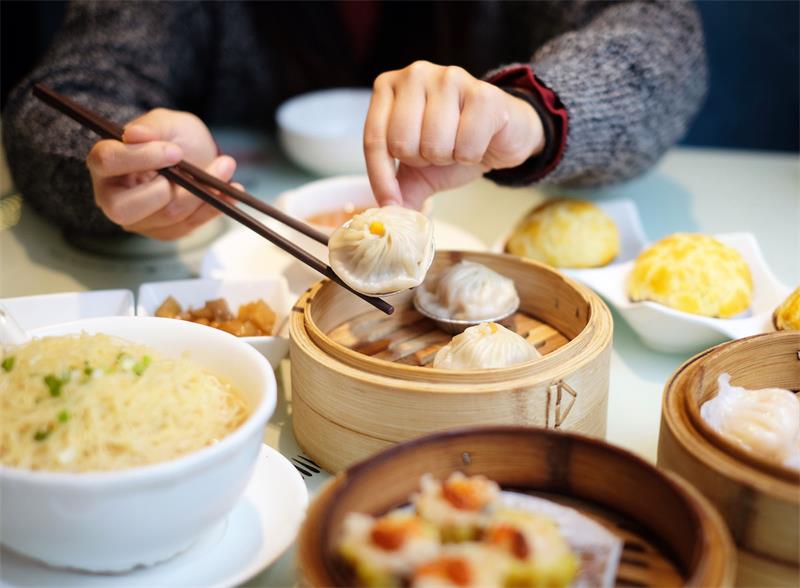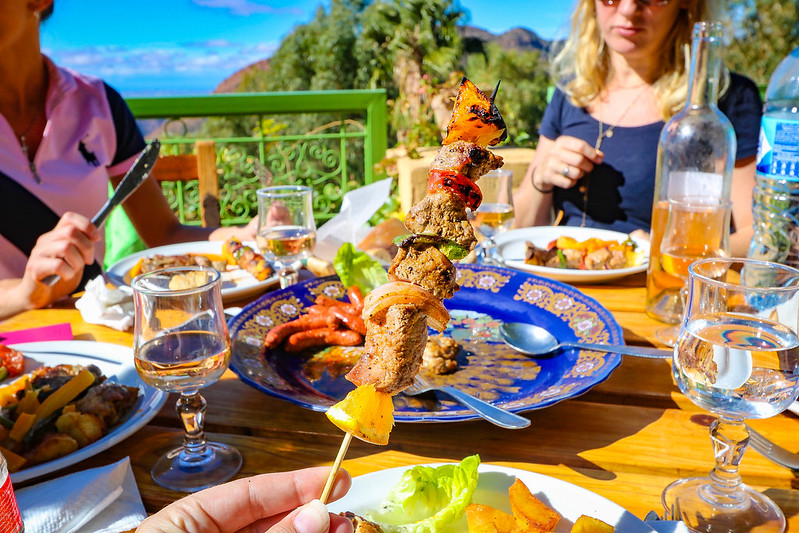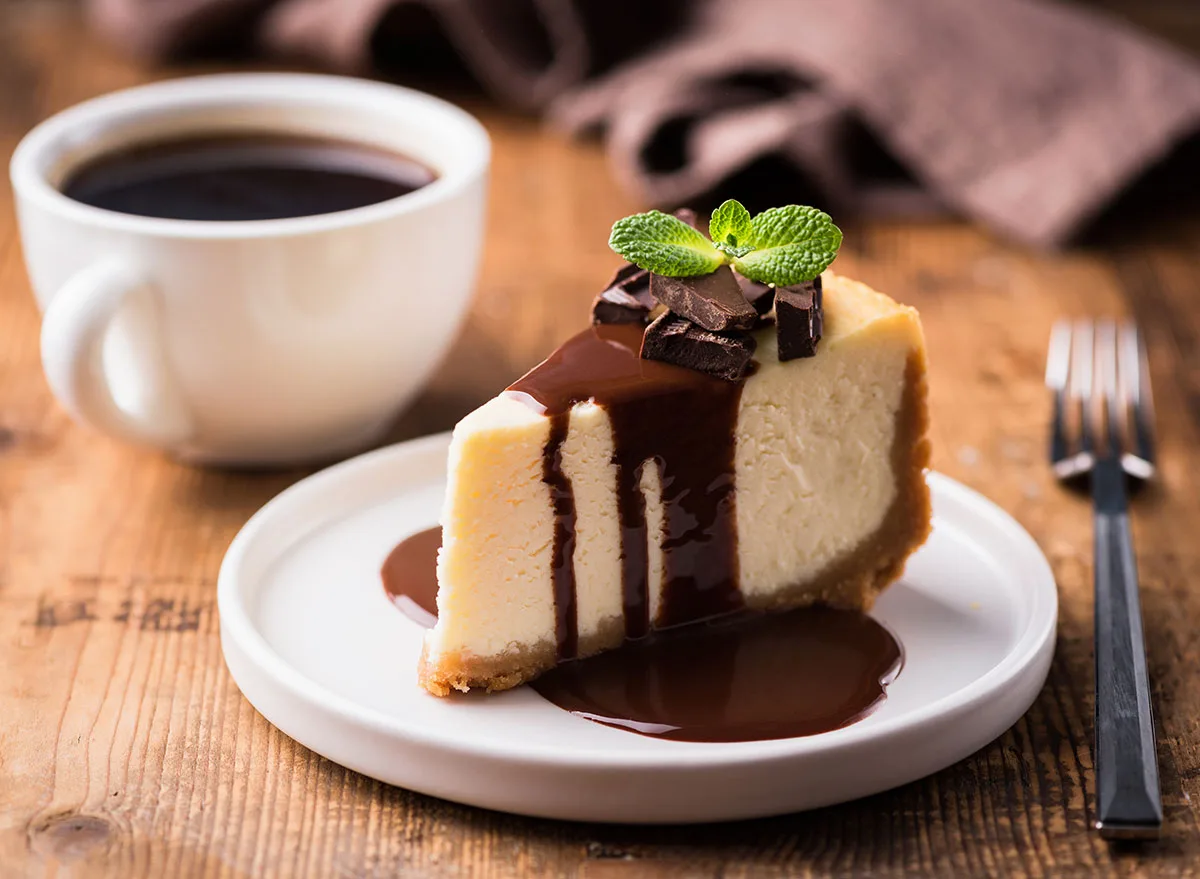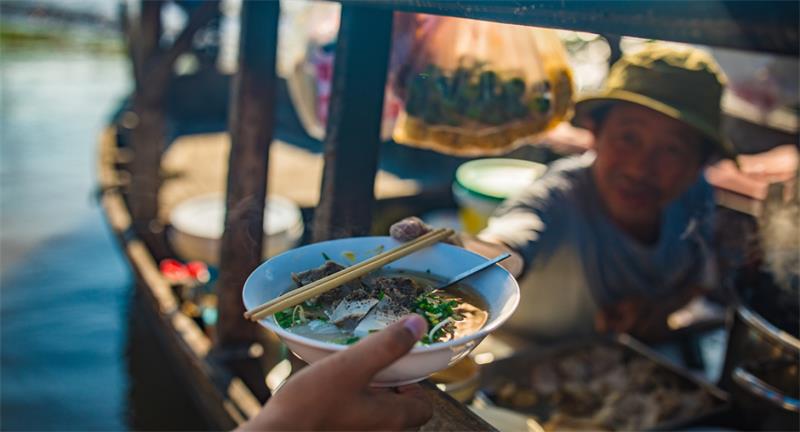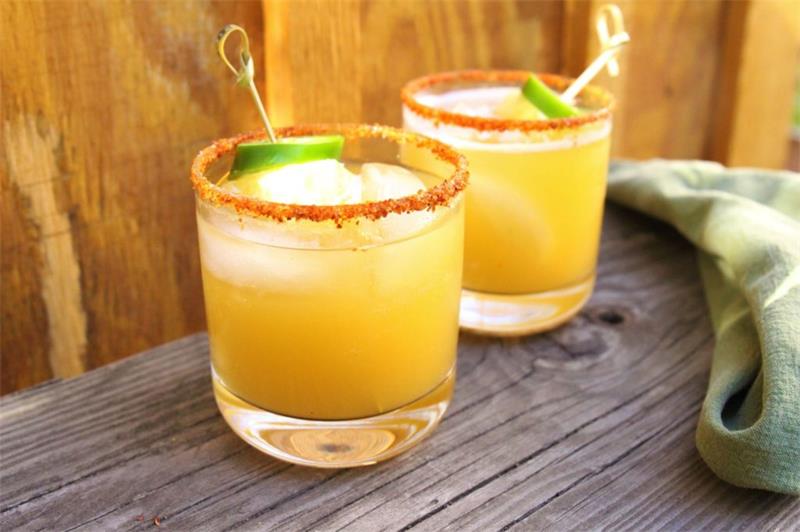Contents
The Significance of Dim Sum in Hong Kong
Hong Kong is known for its bustling streets, towering skyscrapers, and delicious cuisine. One of the most popular dishes in this city is dim sum, which has a long and fascinating history.
Dim sum refers to small bite-sized portions of Chinese food that are typically served in bamboo baskets or on small plates. These dishes range from savory steamed dumplings to sweet egg tarts.
Dim sum has been a part of Hong Kong’s culture for over 100 years. It originated in Guangzhou, China, where it was first served as a snack to travelers on the Silk Road.
Over time, dim sum evolved into a popular brunch dish that was enjoyed by people from all walks of life. Today, dim sum is an integral part of Hong Kong’s food scene.
Locals and tourists alike flock to dim sum restaurants throughout the city to savor these delectable delicacies. In fact, some restaurants even offer an “all-you-can-eat” dim sum option!
Why It’s Important to Know How to Order Like a Pro
With so many options available at a typical dim sum restaurant, it can be overwhelming for first-time diners to navigate the menu. That’s why it’s important to know how to order like a pro!
Not only will this help you try new dishes without feeling intimidated, but it will also ensure that you get the most out of your dining experience. Knowing how to order like a pro means understanding the different types of dim sum dishes and how they are typically served.
You’ll also learn about common etiquette rules when dining at a dim sum restaurant – such as pouring tea for others at your table. Overall, knowing how to order like a pro will enhance your enjoyment of this beloved cuisine and impress your fellow diners with your knowledge and expertise!
Know the Basics
Explanation of Dim Sum and Common Dishes
If you’ve never had dim sum before, it can seem a bit overwhelming. Essentially, dim sum is a style of Chinese cuisine where small plates or baskets of food are served alongside tea.
Traditionally, dim sum is eaten for breakfast or brunch, but many restaurants offer it all day long. The dishes are meant to be shared among the table, so it’s a great way to try many different things in one sitting.
Now let’s talk about some common dishes you’ll find at a dim sum restaurant. First up: Har Gow.
These steamed dumplings are stuffed with shrimp and wrapped in a translucent rice wrapper. They’re delicate and delicious – but be careful not to burn your tongue on the hot filling!
Another popular dish is Siu Mai – these pork dumplings are also steamed and usually come with a small piece of shrimp on top. If you’re feeling adventurous, give Cheong Fun a try.
These rice noodle rolls can be filled with everything from barbecued pork to shrimp to vegetables. They’re often served with soy sauce for dipping and make for a tasty alternative to dumplings.
Types of Tea Served with Dim Sum
Tea is an important part of any dim sum meal – not only does it help wash down all those tasty morsels, but it’s believed to aid digestion as well. In Hong Kong, the most common tea served with dim sum is Pu-erh – this fermented tea has an earthy flavor that pairs well with rich foods like dumplings and buns.
Another popular choice is Jasmine tea – this fragrant green tea provides a lighter palate cleanser between bites of heavier dishes. If you prefer something sweeter, try Chrysanthemum tea – this floral infusion has natural sweetness and is believed to have cooling properties.
No matter what tea you choose, remember that it’s customary to pour tea for others at your table before pouring your own. And don’t worry about finishing your cup – servers will often come around to refill it throughout the meal.
Finding the Right Restaurant
Tips on finding an authentic dim sum restaurant in Hong Kong
If you want to really experience the best of dim sum in Hong Kong, it’s important to find an authentic restaurant that serves up delicious and fresh dishes. Here are a few tips to help you find the right restaurant:
– Research online: There are plenty of websites and forums that offer recommendations for some of the best dim sum restaurants in Hong Kong. Check out sites like Openrice or TripAdvisor to get an idea of which places come highly recommended.
– Look for crowded restaurants: The more people there are at a restaurant, the better it usually is. If you see a packed dim sum joint with locals lining up outside, chances are it’s going to be good.
– Go where the locals go: If you’re unsure where to go, ask your hotel concierge or local friends for recommendations. Locals know best and can point you in the direction of some hidden gems.
Popular dim sum restaurants to try
Here are a few popular dim sum restaurants that are definitely worth checking out: – Tim Ho Wan: This Michelin-starred restaurant is famous for its crispy pork buns and BBQ pork rice rolls.
It’s a little on the pricier side, but definitely worth it for such high-quality food. – Lin Heung Tea House: One of Hong Kong’s oldest and most traditional tea houses, this place is known for its bustling atmosphere and classic Cantonese dishes like steamed beef balls and cha siu bao.
– Maxim’s Palace City Hall: Located in Central Hong Kong, this huge dim sum hall can seat up to 500 people at once. It’s famous for its char siu bao (barbecue pork buns) and har gow (shrimp dumplings).
No matter which restaurant you choose, make sure to arrive early and come hungry. Dim sum is all about sharing, so be prepared to try a little bit of everything and enjoy the experience with friends or family.
Ordering Like a Pro
Understanding the Ordering Process at a Dim Sum Restaurant
It’s important to understand the ordering process at a dim sum restaurant to order like a pro. Unlike ordering at other restaurants where you may select individual dishes, dim sum is served in small portions and shared amongst the table. Servers will push around carts with steaming baskets of various dishes.
To order, simply flag down the server and point to what you want. In addition to carts, some restaurants provide paper menus for customers to order from.
Take your time and don’t be afraid to ask questions about unfamiliar dishes. When finished ordering, servers will stamp your bill indicating which items you ordered.
Tips on How to Order Efficiently and Effectively
To order efficiently and effectively, consider these tips: 1. Start with hot tea – it’s common for servers to offer tea as soon as you sit down.
Accepting tea signals that you’re ready for service. 2. Stick with staples – if it’s your first time trying dim sum or if you’re not feeling adventurous, stick with classic dishes like har gow (shrimp dumplings) or siu mai (pork dumplings).
3. Pace Yourself – it’s easy to get carried away with all the delicious options available but remember that dim sum is meant to be eaten slowly over time. 4. Don’t over-order – since dishes are meant to be shared amongst the table, it’s better to start small and add on later if needed.
Common Mistakes to Avoid
Here are some common mistakes people make when ordering dim sum: 1. Ordering too much food – while sharing is encouraged in Chinese culture, it’s important not to order more than your party can eat. 2. Being indecisive when ordering – take your time reading through menus or observing what’s coming out on the carts to make informed decisions.
3. Not trying new dishes – don’t be afraid to try something new! Dim sum is a great opportunity to explore and discover new flavors.
Must-Try Dim Sum Dishes
Har Gow (Shrimp Dumplings)
Har Gow, or shrimp dumplings, are one of the most popular dim sum dishes. These translucent dumplings are filled with succulent shrimp and bamboo shoots, and are steamed to perfection.
The skin is thin and delicate, so be careful when picking them up with chopsticks! The key to great Har Gow is in the texture – the filling should be firm but juicy, and the skin should be soft but not too sticky.
Siu Mai (Pork Dumplings)
Siu Mai, or pork dumplings, are another must-try dish. These open-faced dumplings are filled with a mixture of ground pork, shrimp, and mushrooms. They’re usually topped with a small piece of crab roe or carrot for extra flavor and color.
Siu Mai can be enjoyed on their own or dipped in soy sauce mixed with a little bit of vinegar. Look for ones that have a firm texture and plenty of filling!
Char Siu Bao (Barbecue Pork Buns)
Char Siu Bao, or barbecue pork buns, are fluffy steamed buns filled with sweet barbecued pork. The dough is slightly sweetened as well, which makes for a delightful contrast to the savory filling.
Some restaurants also offer variations like Cha Lua Bao (ham buns) or Lai Wong Bao (custard buns). Char Siu Bao can be eaten as a snack or as part of a larger meal.
Cheong Fun (Rice Noodle Rolls)
Cheong Fun, or rice noodle rolls, may not look like much at first glance – they’re simply rolls made from steamed rice flour batter – but they’re packed full of flavor! Cheong Fun can be filled with a variety of savory ingredients like shrimp, beef, or barbecued pork, and are often served with soy sauce or hoisin sauce for dipping.
The texture is what really makes these rolls stand out – they’re soft and silky on the outside but have a slight chewiness to them. No dim sum meal would be complete without trying at least a few of these classic dishes!
Don’t be afraid to ask your server for recommendations or try something new. Who knows – you may just discover your new favorite dish!
Navigating Unfamiliar Dishes
How to Identify Unfamiliar Dishes on the Menu
One of the most intimidating parts of ordering dim sum is when you encounter dishes that you’ve never tried before. Don’t worry, it happens to everyone! The key is to be able to identify these unfamiliar dishes on the menu and get an idea of what they might taste like before you order them.
First, look for pictures on the menu or ask your waiter for recommendations. If there are no pictures available and your waiter doesn’t speak English well, try using a translation app on your phone.
This will allow you to read the menu in your native language and get a better idea of what each dish contains. Another helpful tip is to study up on dim sum prior to dining.
Research popular dishes online and take note of their appearance so you can easily spot them on the menu. If all else fails, don’t be afraid to ask other diners for their recommendations or even just observe what people around you are eating.
Tips on Trying New Dishes
Now that you’ve identified some unfamiliar dishes that sound interesting, it’s time to try them out! But how do you know if something is really worth ordering?
One approach is to start with smaller portions so you don’t waste too much food if it isn’t to your liking. Another option is to split an order with someone at your table so that both of you can try new things without committing too much.
If all else fails, remember that dim sum restaurants typically have a pretty quick turnover rate for dishes. This means that if something isn’t quite your taste, there will likely be another new dish coming around soon enough.
Keep an open mind when trying new things! Dim sum cuisine features many unique flavors and textures that might take some getting used to but could end up being your new favorite dish.
Dim Sum Roulette
If you’re feeling especially adventurous, try playing a game of “dim sum roulette” with your dining companions! This involves closing your eyes and randomly pointing to a dish on the menu. You then have to order and try whatever dish you selected, no matter what it is.
This can be a fun way to step out of your comfort zone and try new things while also adding some excitement and spontaneity to your meal. Just make sure that everyone at the table is comfortable participating before starting the game!
Dining Etiquette
Sharing tables with strangers
When dining in a dim sum restaurant in Hong Kong, it is common to share tables with strangers, especially during peak hours. It may seem awkward at first, but it’s a normal practice and part of the dining experience. If you are alone or with a small group, don’t be surprised if you’re seated with other diners.
Embrace this cultural difference and try to strike up a conversation with your tablemates. Who knows?
You might end up making new friends! It is also important to respect the privacy of others while sharing tables.
Don’t eavesdrop on their conversations or intrude on their personal space. Keep your conversations at an appropriate noise level and be mindful of your manners.
Pouring tea for others
In Chinese culture, pouring tea for others is a sign of respect and hospitality. If you are the youngest or most junior person at the table, it’s customary to pour tea for the elder or superior guests first.
When pouring tea for someone else, hold the teapot handle with one hand and support the bottom with the other hand to show that you’re offering it respectfully. If someone pours tea for you, show gratitude by tapping two fingers (index and middle) lightly on the table as a gesture of thanks.
This is called “finger kowtow” in Cantonese culture. In addition, when pouring tea for yourself, remember not to fill your cup all the way up – leave some space at the top as a sign of politeness towards your server.
Conclusion
Overall, dining etiquette in Hong Kong’s dim sum restaurants may seem unfamiliar at first glance but can add depth and enjoyment to your overall experience if done correctly. Remember that sharing tables with strangers is normal practice – embrace this unique aspect of Chinese culture and try to make the most of it.
It’s also important to be respectful when pouring tea for others, as this is a sign of warmth and generosity in Chinese culture. By following these simple tips, you’ll be able to fully appreciate and enjoy the true dim sum experience in Hong Kong.
Conclusion:
Congratulations! You are now ready to order dim sum like a pro in Hong Kong. With the knowledge you’ve gained, you’ll impress your friends and family with your ability to navigate through the menu and order delicious dishes with ease.
Remember to start with the basics, find an authentic restaurant, and don’t be afraid to try new dishes. Embrace the culture of sharing tables and pouring tea for others, it’s all part of the unique dim sum experience.
Throughout this article, we’ve covered a lot of ground – from understanding what dim sum is and how it’s served, to finding the right restaurant and knowing how to order like a pro. We’ve explored some popular dim sum dishes that you simply must try when in Hong Kong, as well as some tips on navigating unfamiliar dishes on the menu.
Overall, ordering dim sum is not just about the food – it’s a cultural experience that brings people together over shared plates and steaming cups of tea. So next time you’re in Hong Kong or any other city famous for its dim sum cuisine, put your newfound knowledge into practice and enjoy all that this amazing culinary tradition has to offer.
Always keep an open mind when it comes to trying new things – especially when it comes to food. Dim sum is a unique cuisine with many different flavors and textures waiting for you to discover them.
With some patience and practice, anyone can learn how to order like a pro in Hong Kong’s bustling dim sum restaurants. So go out there with confidence – immerse yourself in Chinese culture – try something new — who knows what delicious adventure awaits!

